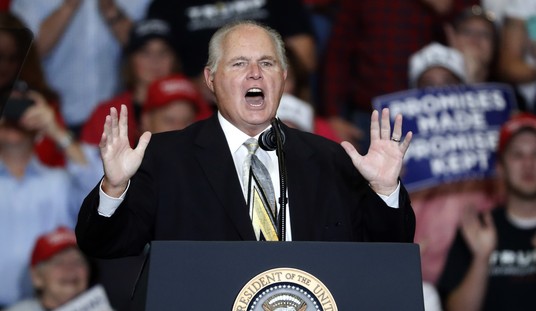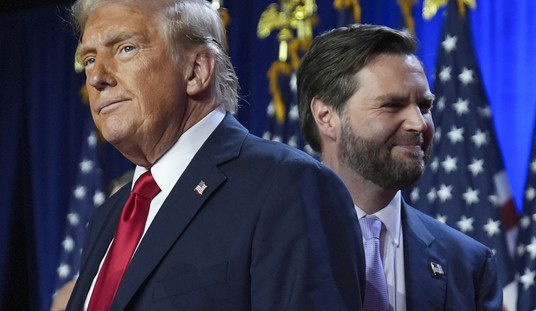One of the most amazing aspects of the gun-control fight in America is how short-sighted the focus on guns and violent death is. I don’t refer only to gun-control advocates when I say this.
Of course, I support the right to keep and bear arms, and I encourage every law-abiding American to consider owning a gun for self-defense. Unless you are in one of the high-risk groups — convicted felons, people with serious depression or other mental illness, or people with substance-abuse problems — or live with someone in those high-risk groups, having a gun available to you has very little downside. If someone breaks into your home or if you are attacked on the street, being armed is a clear advantage.
Yet I find myself looking at the enormous amount of money that Americans have spent on buying guns and ammunition since Obama was elected, and I scratch my head a bit.
If you are buying a gun because you fear a totalitarian society, that decision makes some sense. (I consider that a low-likelihood, severe-consequences event.) If you do not own a gun and are afraid that you may have difficulty buying one in the future, that makes some sense. (This is also a low-likelihood event, but again, with severe consequences.) What makes less sense is the person who already has a gun, but has been buying several more guns and lots of ammunition.
What are the most likely risks to your life and property? Is it criminal attack? Unless you live in one of a few dozen extraordinarily dangerous places in the U.S., crime is practically noise compared to your real danger of death.
In 2011, there were 14,612 murders and non-negligent manslaughters in the U.S. Scary, yes. But there were 597,689 deaths from heart disease — an American is 41 times more likely to die from this than murder. There were 574,743 cancer deaths, so you are 39 times more likely to die of cancer than murder. Throw in strokes, chronic lower respiratory disease, and diabetes — all diseases which are at least in part preventable by lifestyle choices — and the total death toll is more than 1.5 million — or 103 times more likely than being murdered.
Guns prevent not just murders, but also rapes, robberies, and aggravated assaults. But the same is true for lifestyle-choice illnesses: even if you do not die from them, there is a lot of other cost and hurt. Before you die of heart disease, cancer, or diabetes, it can take weeks to years before the end comes, and the outpatient, hospital, nursing care, and hospice expenditures will often demolish the assets of even a relatively wealthy person. All the robberies and burglaries of a lifetime will seldom inflict the economic losses that one really serious illness does.
Once you have enough guns to provide the likely security benefit, it makes more sense to focus on preparing for health risks. Which makes more sense: spending $600 on another 9mm pistol and a couple of hours of range time each month, or spending $600 on a treadmill and spending five hours a week using it for the rest of your life? Which makes more sense: accumulating enough ammunition and survival equipment to deal with World War III, or developing the self-discipline to eat healthy food in healthy portions? (Of course, what constitutes “healthy food” has been the subject of considerable serious debate of late; the movie Fathead makes the argument that the Department of Agriculture’s “food pyramid” rich in carbohydrates was more about reducing government surpluses than about public health. Increasingly, studies suggest that carbohydrates are the biggest problem, and that animal fat is not the evil once assumed.)
I’ve spent most of this essay berating the “I need 18 handguns and 14 rifles and 8000 rounds of ammunition to be safe” crowd. To be sure, gun-control advocacy for public safety is far less rational. The gun-control crowd tries to sell gun restrictions as a public safety measure, and yet for the vast majority of Americans, gun control, even if it worked as promised, is focused on very nearly the least important problem.
In 2010, there were 31,672 firearms deaths in the U.S. (including justifiable homicides by law enforcement and civilians). Of these, 19,392 (or 61%) were suicides. Even the most insistent of gun-control advocates admit that if all the guns magically disappeared (and magic would be required), at least some of the gun suicides would end up as suicides by other methods. Ditto for the murders: most gun-control advocates will concede that some firearms murders would still happen with other weapons. (Those of us who have studied the matter carefully are pretty sure that nearly all the gun murders would be replaced by murders with other weapons.) But even if the most extreme gun-control advocates magically achieved their fantasy, the lifestyle-choice deaths mentioned at the start of this article would be 47 times higher than the firearm deaths.
If gun-control advocates were primarily concerned about reducing unnecessary deaths, the same energy would be better spent on discouraging obesity, smoking, bad eating habits, unsafe promiscuous sex, IV drug abuse, couch potatoism, alcoholism, and the rest of the lifestyle choices that contribute mightily to the lifestyle-induced deaths. These cause vastly more deaths each year than firearms.
In this respect, as much as Michael Bloomberg’s nanny-state attempt to reduce obesity by banning high-capacity soft drinks was an inappropriate use of government, at least he was on the right topic in terms of public health. Bloomberg’s own gun-control delusions, even under the most positive of assumptions, would save a tiny fraction of the number of lives.









Join the conversation as a VIP Member